They have the silver medal, but the gold one seems unobtainable
Many of Spain’s 17 regions have more than one team that made it to the Primera División. Think of Catalonia, Madrid, and Andalusia, but also Extremadura, Asturias, and the Canary Islands. However, some regions only have had one club on the highest level; one team to represent the entire region on a national scale. But who are the second teams in these regions?

Cantabria
In Cantabria, the principal club has always been Real Racing Club de Santander, a team that has played 44 seasons in the Primera División so far. Perhaps even more important, Racing is a well-known club name for Spanish football fans and has a fanbase all over Cantabria. In short, the status of Racing seems unobtainable for the region’s second team: Gimnástica de Torrelavega.
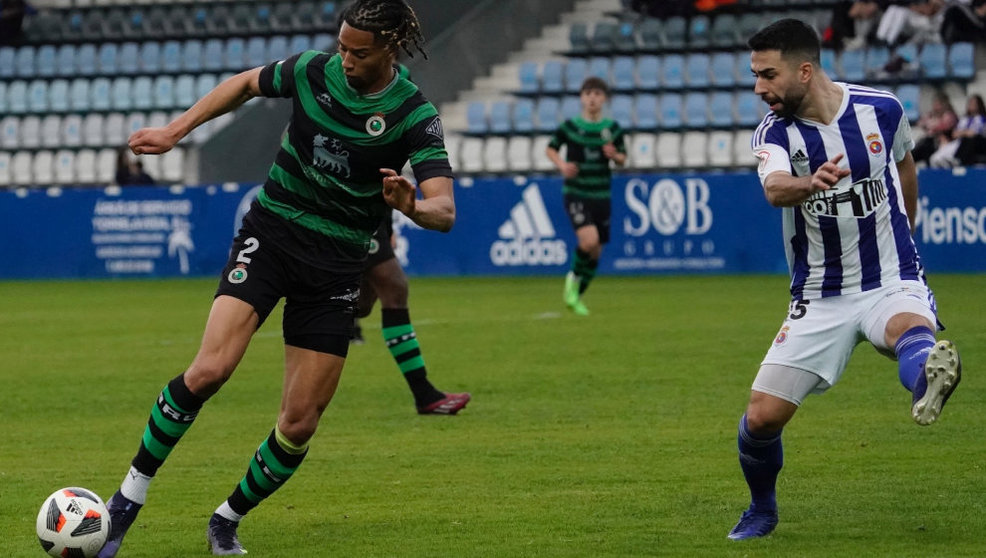
Gimnástica is the decana, the oldest club from Cantabria, founded in 1907. However, the club was only officially organized in 1925, thus already behind on Racing. This influenced its trajectory, even though the gimnásticos were able to reach the Segunda División in 1939. Even though the white-blues did not maintain their spot in the league, they would play more seasons in the ‘silver division’ during the 1940s, 1950s, and 1960s.

In the decades that followed, Gimnástica usually competed in the Tercera División or even the Segunda División B. This led to the situation in which Gimnástica was out of professional football but still was the second-best-performing Cantabrian team. However, in recent seasons, clubs like Laredo and Cayón have reached the Segunda Federación, showing they’re ready to become the second-strongest team from the coastal region.

There is much interesting to tell about the Torrelavega-based club, but the most eye-catching one is its stadium: El Malecón. It used to be a stadium with only two main stands but underwent a huge makeover in 2011. El Malecón became an example for stadium designers because of both its exterior and its interior.

La Rioja
La Rioja has one big similarity and one big difference to the situation in Cantabria. The similarity can be found in Logroñés, a club that played nine seasons in the Primera División. So far, this club is the only club to have reached the top tier. However, the difference with Racing de Santander is that Logroñés has been dissolved, and now, it’s very complicated to point out the ‘second’ club of La Rioja.
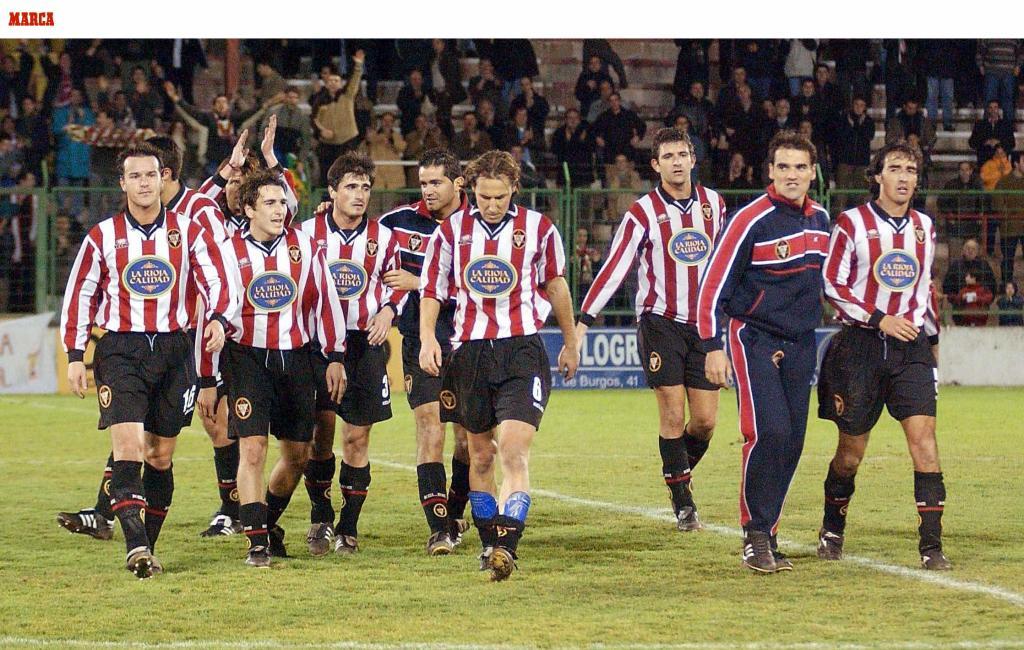
The problem here is that two clubs have been founded to represent CD Logroñés. The first one, and, in 2023-24, the best one, is SD Logroñés, a team that was established under accionariado popular, an alternative to the standard way of managing a club. In short: all members of SD Logroñés have one vote in all important decision-making, the club works hard to keep the match tickets as accessible as possible, and the club generally maintains a sustainable way of ruling a football club. This has resulted in becoming the strongest Riojan team, playing in the Primera Federación since the league’s creation in 2021.
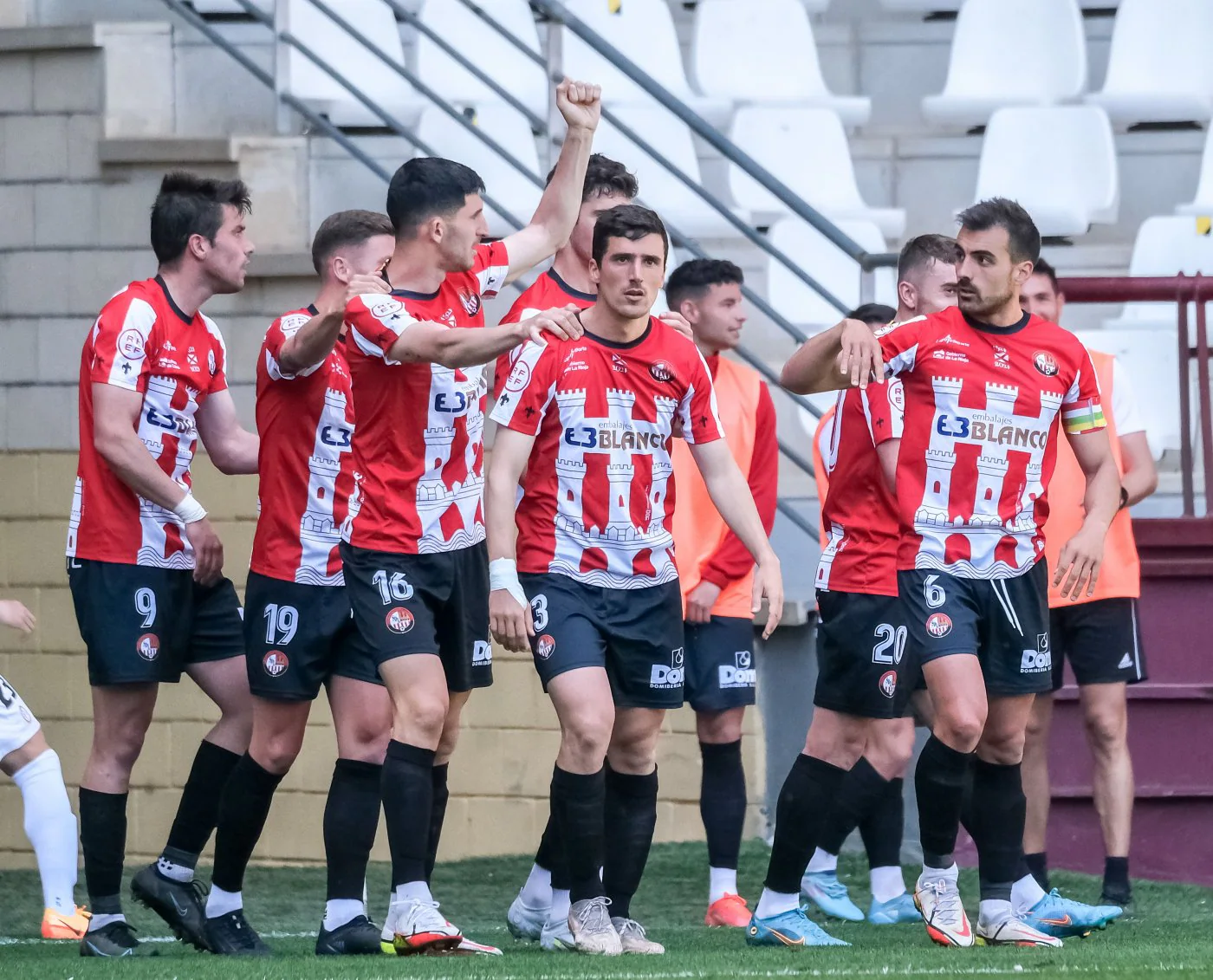
Apart from SD Logroñés, there is another team that calls itself the ‘true’ successor of CD Logroñés: UD Logroñés. This club was created by Félix Revuelta, a local businessman, who bought a place in the Segunda División B in 2009. This made UD Logroñés the best Riojan team from the start, which was confirmed after the blanquirrojos achieved promotion to the Segunda División in 2020. However, after suffering two relegations in three seasons, UD Logroñés competes in the fourth tier in the 2023-24 season.
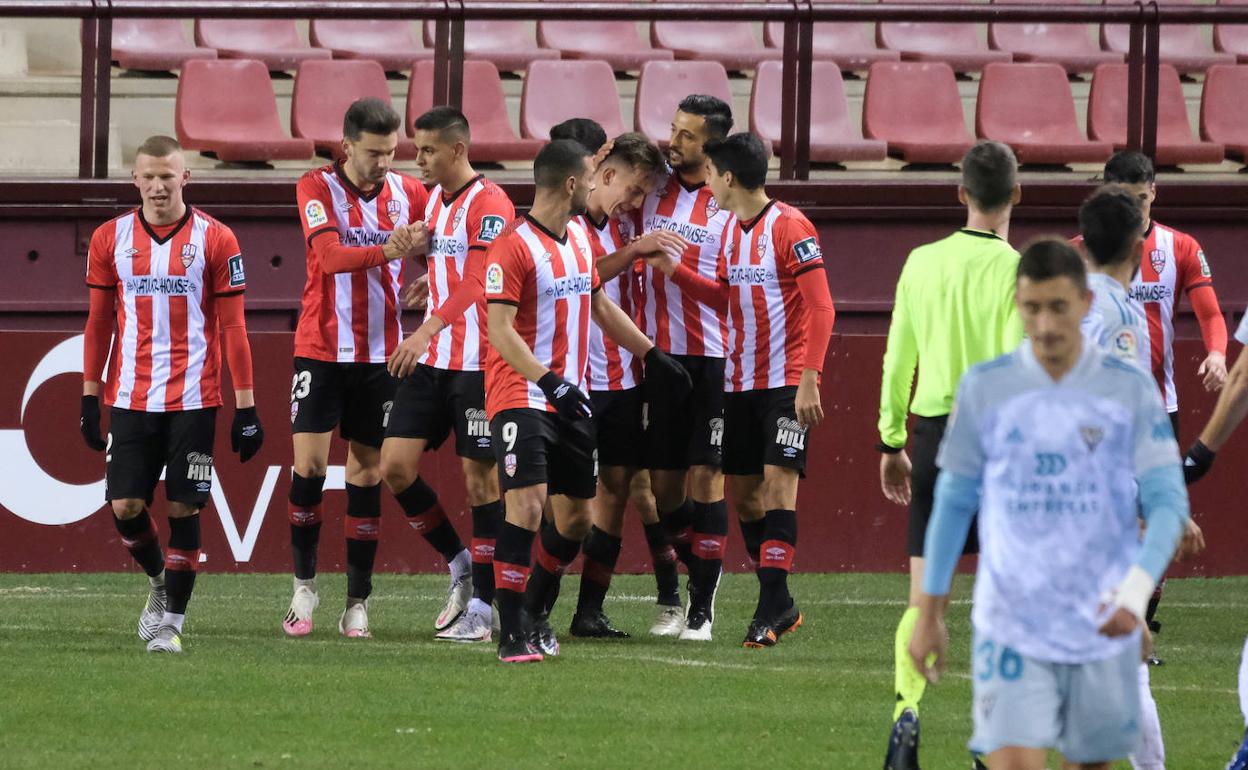
As often happens when two teams are created after the dissolution of one team, SD Logroñés and UD Logroñés have a fierce rivalry. Not only the battles on the pitch are tough, but also the social dynamics of the rivalry can be felt in Logroño, the capital of La Rioja. Moreover, both clubs share the stadium in which CD Logroñés used to play: Las Gaunas.

However, if we consider both successors of CD Logroñés as the joint-biggest teams of La Rioja, we should take a look at another team: Calahorra, the squad highest on the all-time ranking of La Rioja after versions of Logroñés. Calahorra is located in the homonymous town and has played many seasons in the Tercera División and Segunda B. Moreover, the calagurritanos played two seasons in the new Primera Federación, only to go down together with UD Logroñés in 2023. Finally, if we look at the social aspect, Calahorra does not come close in status to either one of the Logroñés’s, but other Riojan clubs do come close to Calahorra’s social relevance, like Haro, Alfaro, and Arnedo. In conclusion, it is difficult to choose either one of the successors of CD Logroñés as the first or second team of La Rioja, but when we look at achievements in football, Calahorra can safely be called the biggest club of La Rioja after those two.
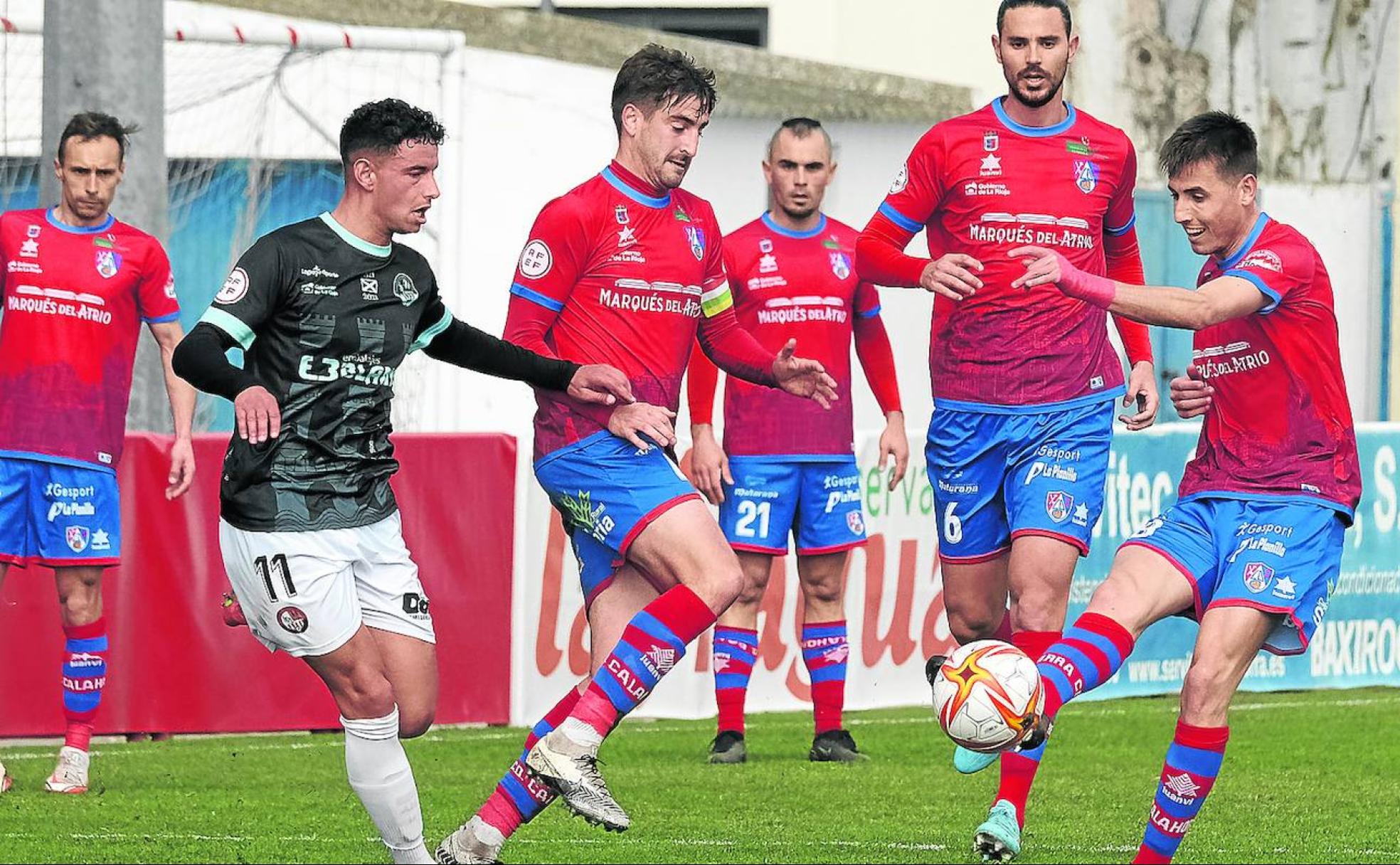
Navarre
The only Navarrese team to have played in the Primera División, and even the only one ever in professional football, is Osasuna, a classic in the Primera División. However, it is, yet again, difficult to decide what the second biggest Navarrese club is, even though it would go between two teams, the first of which is Izarra.

In 1924, CD Izarra was founded in Estella-Lizarra, a city in the west of Navarre. In the first decades of their existence, the Tercera División was the ceiling of the albiazules, who used to play more seasons in the local amateur divisions. But when the 1990s arrived, this changed completely. Izarra made its debut in the Segunda B and played here for many seasons. As a matter of fact, the estellicas have been able to stay up from 2015 until at least 2023-24, even surviving the name change of the Segunda B to the Segunda Federación. This consistency generates a stable base and local prestige for the club that is known for its youth academy, having trained Juan Arza, Carlos Martínez, Oier Sanjurjo, and Javi Martínez, among others. However, there’s another team that considers itself the second Navarrese club: Tudelano.

After many teams from Tudela merged in 1935, Tudelano was born, the new representative team of the town. The blanquinegros quickly settled in the Tercera, a competition in which they would compete for 55 seasons – the majority of its existence. However, Tudelano has also often played in the Segunda B during previous decades, to which one season in the Primera Federación can be added. This made Tudelano one of the most feared Navarrese teams in the last years.

Tudelano beats Izarra on the all-time ranking of Navarrese football, while the tudelanos have also finished above the estellicas on many occasions in the last few years. Moreover, Tudela has almost three times more inhabitants than Estella-Lizarra, and their stadium is bigger, creating a social advantage for Tudelano over Izarra. In short, Tudelano can be considered a slightly bigger club than Izarra, even though no one can say with certainty if this will stay the same in the short-term future.

Balearic Islands
The biggest Balearic team is the one that carries the name of the biggest island: Real Mallorca. Not only is Mallorca the only Balearic team to have played in the top tier, it is also one of the 16 clubs to have won the Copa del Rey. And, as in all regions discussed earlier, Real Mallorca is socially the most relevant club in its region. The case for the second club of the Balearics is a bit more complicated, partly due to the distribution of all teams over different islands. The first contestant is the club that sits second in the all-time ranking of the Balearics: Constància.

Constància is the representative club of Inca, an important Mallorcan city, and already reached the Segunda División in the 1930s. In 1944, the constanciers were very close to reaching the Primera but failed to do so. The white-blacks would go on to play more seasons in the second tier but have mostly been present in the Tercera, accumulating over 60 seasons. Constància has only been present in three editions of the Segunda B and lost the fame it famously had in the 20th century.
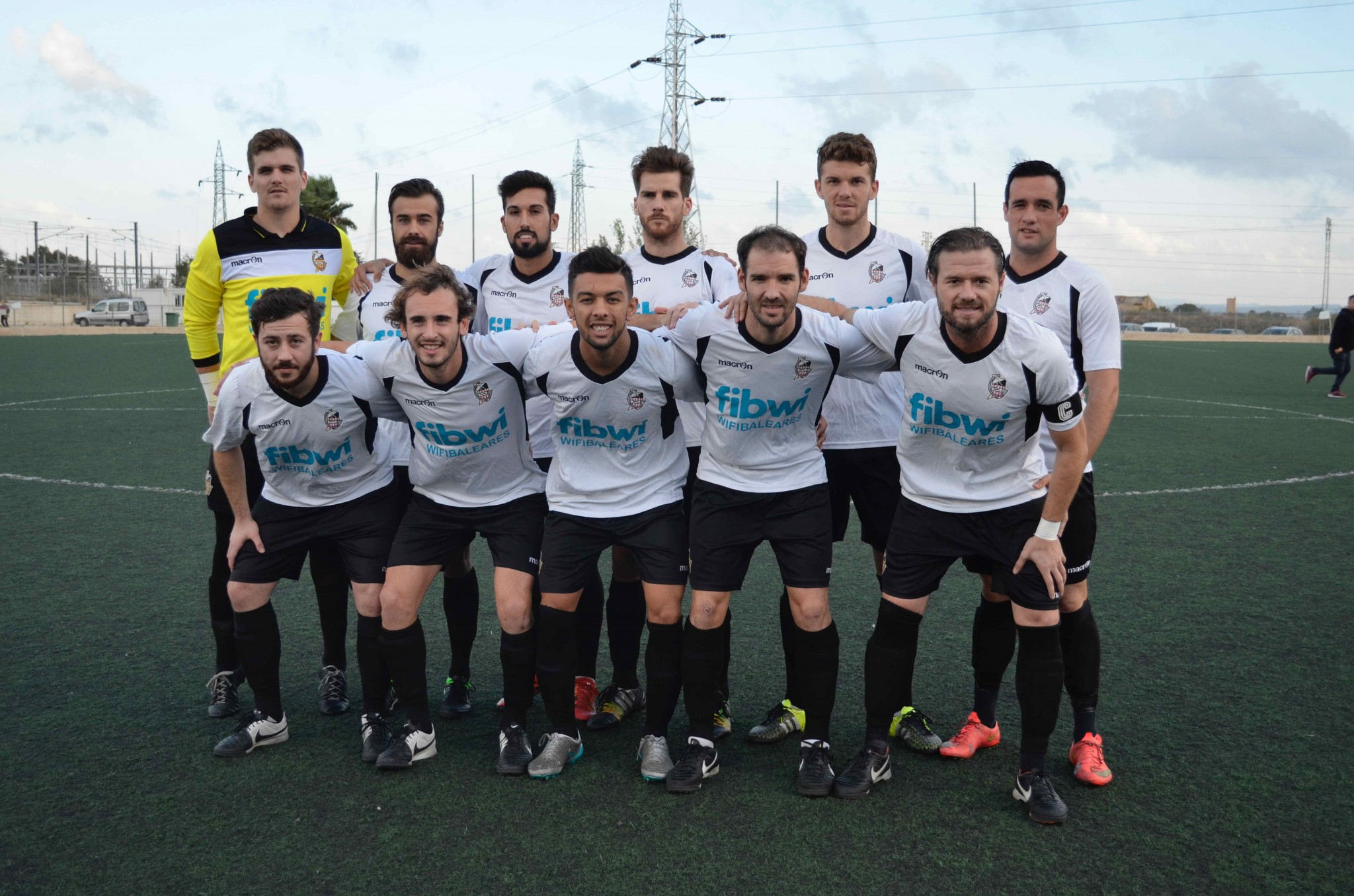
The second team that claims the title ‘second-biggest Balearic club’ is Atlètic Balears, a team that, just like Real Mallorca, is from the Balearic capital of Palma. Atlètic Balears played in the second tier during the 1950s and 1960s but followed Constància to the Tercera División in most of the remaining seasons of the 20th century. However, Atlètic Balears escaped this division and has been present in the third tier since 2010. On many occasions, the balearicos were very close to returning to the second division, without actually completing that goal so far. These achievements of Atlètic Balears made it the second-strongest Balearic club for a long time, but that changed with the arrival of UD Ibiza.

Ibiza is an island with a tumultuous football history and does not dispose of a big club that has a stable history. However, UD Ibiza is trying to break this rhythm. Founded in 2015, Ibiza has achieved promotion often since its short history, reaching the Segunda División in 2021. This feat increased the number of supporters of Ibiza, a club without an identity going back more than a decade, and improved its brand awareness. Moreover, the celestes have consistently been performing better than Atlètic Balears in the 2020s.

To summarize, the Balearic Islands does not really have a second club, and every club out of the three can claim to be the second Balearic club for different reasons. Historically, Constància has most seasons in the second tier. Socially, Atlètic Balears has the most fans. Currently, Ibiza performs best. It is up to everyone themselves to decide which aspect is most important.
Murcia
Only one club dominates Murcian football: Real Murcia. Or, at least, used to do so. After a massive crisis at the club in 2014, Real Murcia suffered an administrative relegation to the Segunda B and has not returned to professional football yet. Still, no Murcian club has ever come close to the popularity and status of Real Murcia. The second club of Murcia, however, has been able to reach the second division and is now considered the strongest Murcian squad: Cartagena.
:quality(70)/cloudfront-eu-central-1.images.arcpublishing.com/prisaradio/RPNVE3RRHVPNRDXGMFHPVAMS2Y.jpg)
FC Cartagena’s foundation lies in controversy. The team was created in 1995 to replace the principal squad in Cartagena, Cartagena FC, as this club had some serious financial issues and was expected to fold. However, the club survived, after which two clubs with the same name coexisted. The new Cartagena managed to reach the Segunda B three years later, while the older Cartagena had to cease its activities temporarily. This created a huge gap between the teams, and the new Cartagena gained almost all the supporters in the city, which they maintained ever since. This is why FC Cartagena is considered the representative club of the coast city.
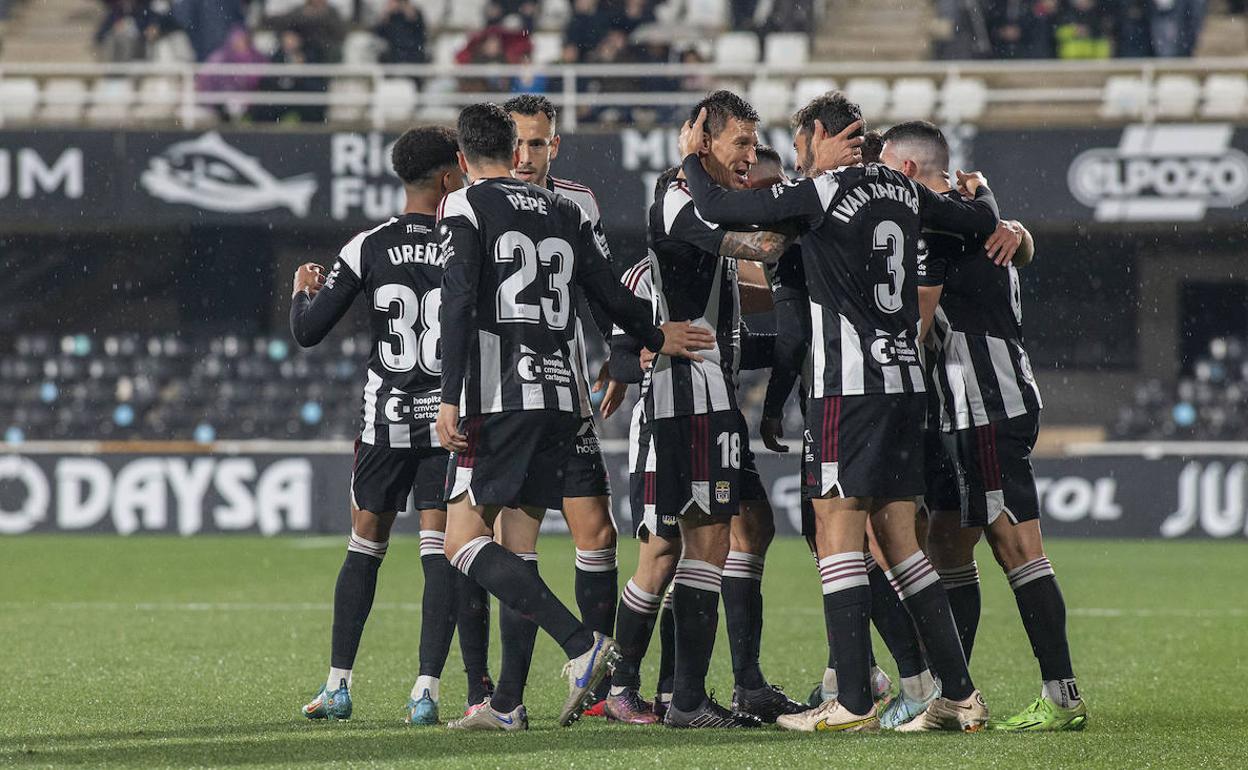
Since the promotion to the third tier in 1998, Cartagena would never drop down to the fourth tier again. On the contrary, Efesé achieved promotion to the Segunda División in 2009, staying there for three seasons. In 2020, the albinegros returned to the second division and, after a fantastic performance in 2022-23, will have played at least four consecutive seasons in professional football. Since 2020, Cartagena has been the strongest Murcian team, and only an unexpected rising of Real Murcia can change this dynamic in the short term.

Castile-La Mancha
The last case is the one of Castile-La Mancha, a region in which its best team is also from the regional capital: Albacete. This club played seven seasons in the Primera División and dozens in the Segunda. Especially in the 21st century, Albacete is often present in professional football, making the gap to other teams increase. And the number of teams that want to be considered the region’s second team is higher than any other region: four.

When taking a look at the all-time ranking, Puertollano could be considered the second club of the region, as the mineros played 11 seasons in the Segunda during different decades of the 20th century, but this team does not exist anymore after its dissolution in 2015. Its successor was presented in the same year: Calvo Sotelo de Puertollano, a team that reshaped Puertollano’s club identity. Still, the club managed to retain many supporters and also returned to the Tercera División in 2018, even going up to the Segunda Federación in 2021. However, Calvo Sotelo has a considerably lower number of members than other teams from Castile-La Mancha and also lacks social relevance.

A team with a bigger name is Toledo, partly because the city if more famous than Puertollano. However, Toledo also has an impressive footballing history, playing seven consecutive seasons in the Segunda División in the 1990s. As football was more prevalent in this decade than in the middle of the 20th century, Toledo gained more fame than Puertollano. In the 21st century, the verdes usually played in the Segunda B or Segunda Federación, often battling for promotion.

Another club with a recent glow-up is Guadalajara, the club of the homonymous city. Guada played the entirety of the 20th century in the Tercera or below but finally reached the Segunda B in 2007 when more good things started to happen. In 2011, the morados went up to the Segunda División, becoming the fifth team from Castile-La Mancha to do so. Guadalajara stayed up for two seasons, after which it underwent an administrative relegation after financial mismanagement. This started years of misery at the club, but in 2022, all debts were paid off, and the club secured a place in the Segunda Federación. Just like Toledo, Guadalajara’s recent climax made it one of the best-known teams from the inland region.

The fourth and last club that can be considered the second club of Castile-La Mancha is the only one without experience in the Segunda División: Talavera. CF Talavera was created in 2011 as a successor of the historic Talavera CF, a team with many seasons in the Segunda B. The new Talavera would return its city’s name to the division in a short time and is the only club from Castile-La Mancha to have avoided the Tercera División during the last years – apart from Albacete, of course. The talaveranos were even present for two seasons in the Primera Federación, the first one competing against Alba. The factors of solid performances in the last years and being the representative team from one of the biggest cities of Castile-La Mancha are important arguments in favor of Talavera. However, just like in the case of the Balearic Islands, it seems too difficult to pick out one team as the clear ‘number two’ of its region.

Causes, backgrounds, and Dynamics
Why do some regions have a big difference between their best and second-best clubs and others not? Is it a coincidence that, out of all Spanish regions, just these six regions have only had a single team in the Primera División? And is it a coincidence that all the biggest clubs from these regions are located in the region’s biggest cities? In the second half of this article, a more scientific approach to the previously analyzed cases will be set forth.
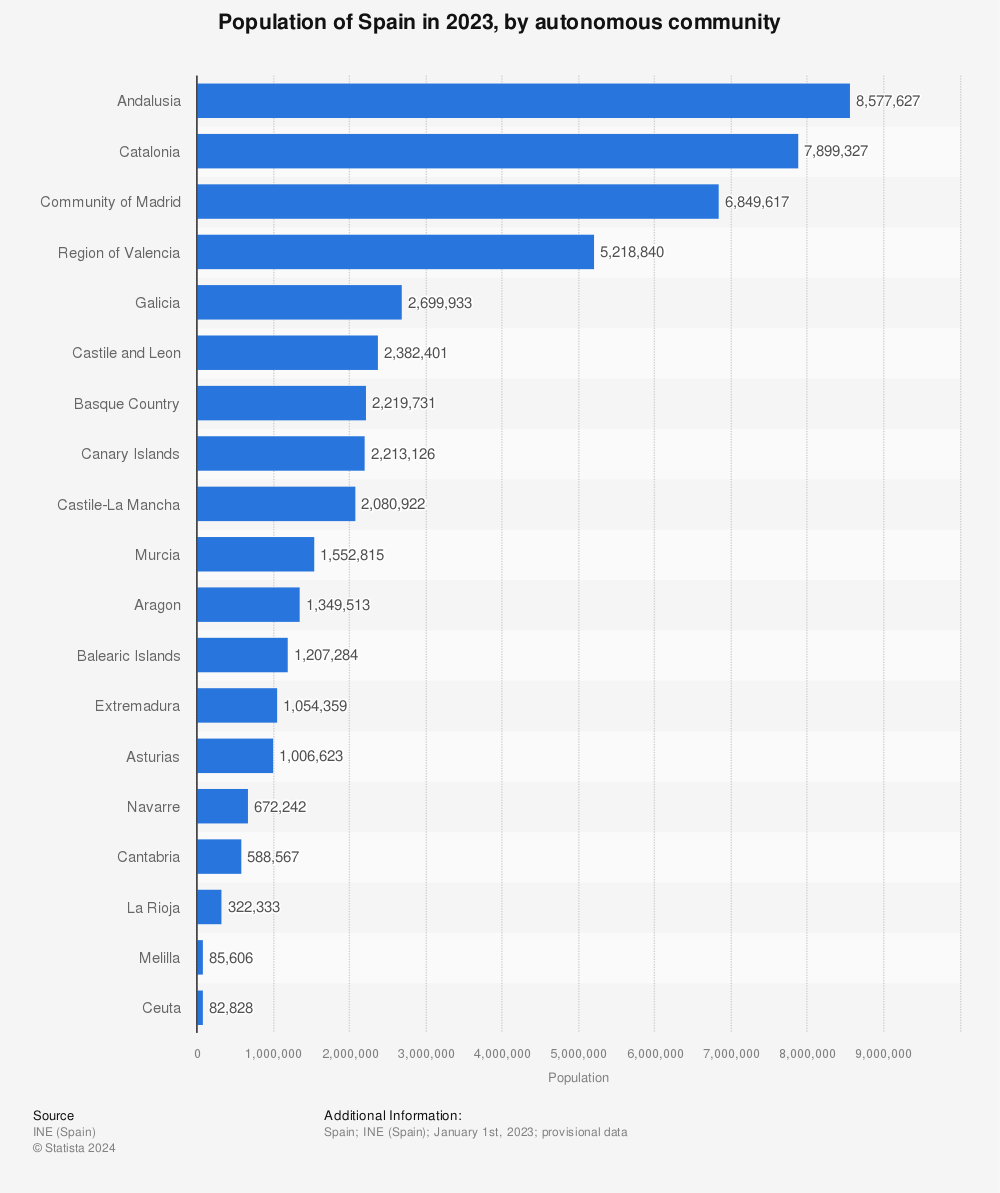
As can be seen above, the six regions in this article are among the lesser populated ones. Moreover, these regions have relatively weak economies that center around the region’s capital. This might explain why the most prominent clubs from these regions are located in the capitals. One exception goes for Castile-La Mancha, which simply does not have an official capital. But there are some more reasons to why the big clubs tend to come from capitals:
- Bigger cities simply have more people who might support their city’s club.
- Bigger cities usually have bigger economies, which translates into more opportunities for sponsoring a club.
- When the economy is bigger, the municipality has a higher budget and, thus, more money which can be used for subsidies for the clubs. However, big clubs do not always receive more government money.
- Football arrived in Spain mainly thanks to British sailors or miners who worked in Spain and brought football with them. From the most important industrial cities (Spain’s biggest cities), the sport spread to other big cities and finally to towns and villages. This means that bigger cities had an advantage in time to develop a football club. Especially in the cases of Racing de Santander, Logroñés, Osasuna, and Real Mallorca, this process has favored their development.
Apart from these factors, there are other factors that originate from these initial factors, often creating vicious circles in favor of established clubs from big cities and counter-effective for decreasing the gap between bigger and smaller clubs.
Regions in which these processes have not influenced football developments enough to stop more teams from developing into elite clubs are either; so populous that the creation of more big teams, representing other big cities was inevitable, or; have very populous and diverse capitals which were unlikely to be represented by a sole team. Exceptions to these arguments are Aragón, in which Huesca achieved promotion to the Primera División in 2018 after good management, and Extremadura, in which regional economic dynamics caused both Mérida and Extremadura to reach the top tier in the 1990s.
Next, let’s look at some factors that influenced football per region.
- In Cantabria, the economy has always been centered around Santander, an industrial capital with the advantage of being a coastal city. For more than a century, the city has had the biggest population, which only increased during the Industrial Revolution. Towns like Torrelavega had a very different economy and could only fall behind on Santander. The gap between Santander and other towns was so big that it was unlikely for the region’s football club not to be in Santander. And as the capital has been able to maintain its economic, demographic, and political power in the 20th century, Racing de Santander had a good base and could consolidate itself in the Primera División.
- La Rioja has always been the poorest and smallest region in Spain, but it used to be a dependent province to Castile until 1983. This explains both the slow development of football in La Rioja, which is similar to many other Castilian provinces, and the quick rise of CD Logroñés at the end of the 1980s, which led them to their debut in the Primera División. Moreover, the low population and economy withhold other towns to create other successful football clubs.
- Navarre is a region with more big towns, even though the difference between the biggest city, Pamplona (209,000 inhabitants), and the second-biggest city, Tudela (35,000 inhabitants), is more than significant. Yet again, Pamplona is the engine of its region. However, there is also a unique dynamic present, as Navarre has a different administrative history than the other Spanish regions. Navarre is divided in five merindades, an administrative subdivision between a province and a municipality. The capital of each merindad used to have some independence and a relatively big economy. This influenced the current economy and demography, as can be seen through football: Osasuna, Tudelano, and Izarra all come from the capital of a merindad.
- The Balearic Islands are a unique case because of the existence of multiple islands and all social, economic, political, geographical, and demographical consequences. As Mallorca has always been the leading island (and Palma the top city), Mallorcan clubs have had a significant advantage over clubs from other islands. This can be illustrated by the fact that all Balearic clubs with a long history come from Mallorca. Islands like Menorca and Ibiza both have a chaotic footballing history and lack a team that represents the island stably and consistently. When focusing on Mallorca, there is a very big social, political, economic, and demographic gap between Palma and ‘the rest’. The demography has allowed many Mallorcan towns to have stable clubs (many Mallorcan clubs are over a hundred years old), but could never compete with Palma. Even though Constància and Real Mallorca performed similarly in the 1930s and 1940s, the inequality between Inca and Palma meant that Constància knew that it wasn’t able to compete forever with the capital’s club, especially after the integration of Mallorcan football clubs into national football. Note that there are some Spanish clubs from smaller towns that have reached the Primera División, but these are either from rich regions or provincial capitals.
- In Murcia, the difference between the capital and other cities is smaller than in La Rioja or Navarre, for example. Especially Cartagena is only twice as small as Murcia, making it the biggest city of a ‘second team’ in this article. Cartagena also has been an important city in history for its strategic location, one of the factors why teams from Cartagena have often been able to play in the Segunda División and why the difference between the teams is smaller than, let’s say, Navarre.
- Finally, Castile-La Mancha is an artificially created region comprising a part of Castile and most of the historical region La Mancha, making it fairer to analyze Castile and La Mancha on their own. As mentioned before, Castilian provincial capitals have not experienced the most successful development of football clubs. This is partly due to the lack of population in most provinces, as many people emigrated in the 19th and 20th centuries to bigger cities with more opportunities. The most prominent city of the Castilian part of Castile-La Mancha is Toledo, a historic city that used to be rich and populous. However, its proximity to Madrid and the lack of industry blocked the city’s development in the last century. Concerning La Mancha, the region’s center has always been Albacete (mostly for its location between other big cities), which is perfectly noticeable in football. Moreover, many previously mentioned or explained dynamics occur in La Mancha.
To conclude, many causes, dynamics, and other relationships can be observed in the ‘silver teams’ of these six regions: from Gimnástica being stuck in second place in Cantabria and La Rioja’s case of two Logroñés’s to the diverse dynamics in the Balearic Islands and the battle of four in Castile-La Mancha. And, it becomes again clear how well football reflects history and society.
Sources
- Borchers, L. (2021). GOLAZO. Self-published.
- Borchers, L. (2022). CARA O CRUZ. Self-published.
- Borchers, L. (2023). The Story of Atlètic Balears. Self-published.
- https://espanaestadios.com/2018/09/16/torrelavega-el-nuevo-malecon/
- @ClasiHistorica, Twitter.
Leave a comment